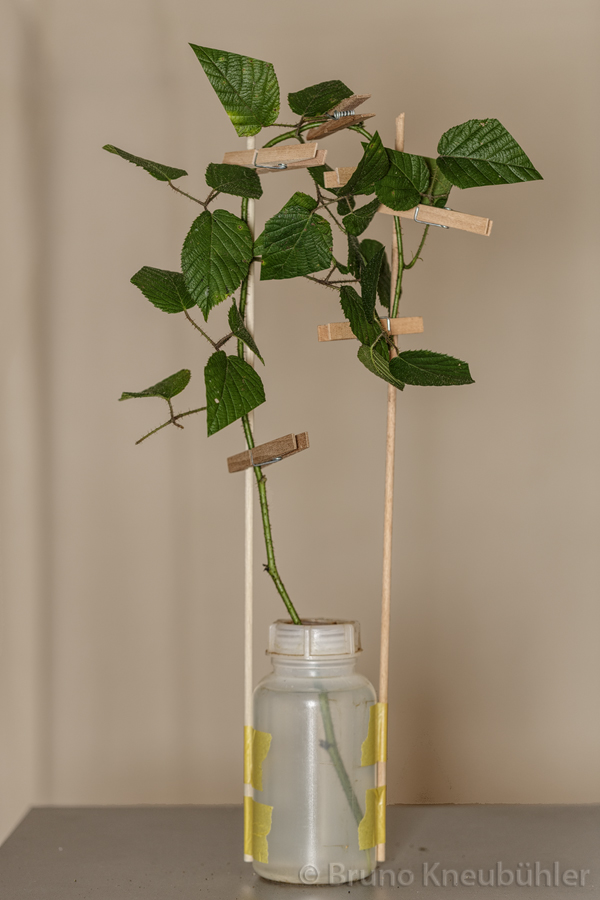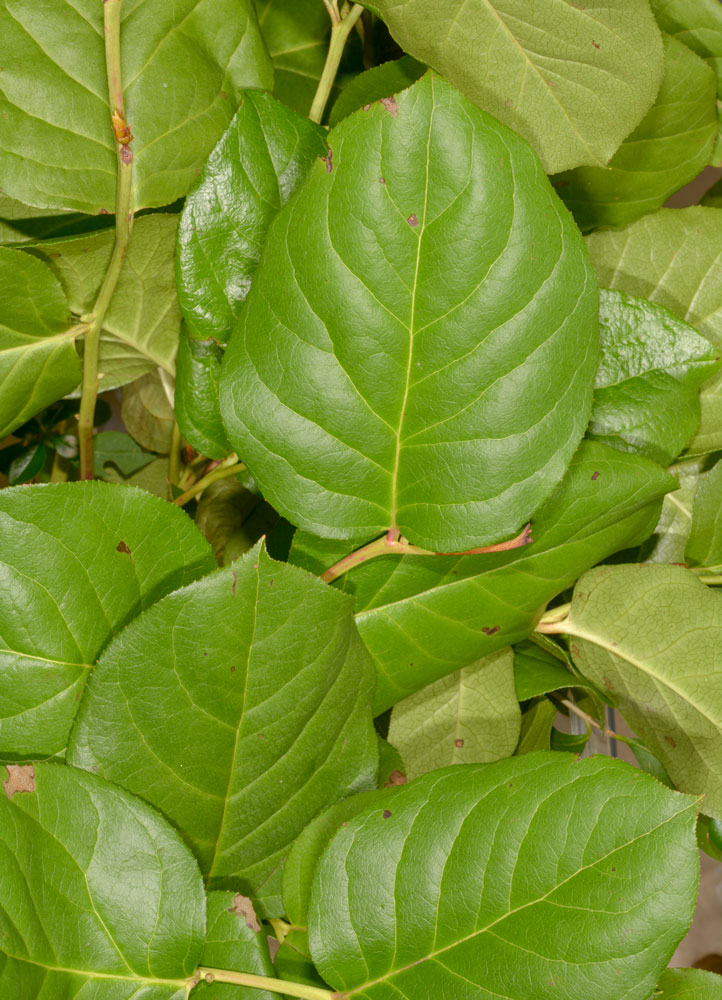Here you find a summary with basic recommendations regarding feeding phasmids. You can find more specific info and a useful tool to search suitable plants for your species in Food Plants.
Basic Rules
- Be aware that the food plants we offer our phasmids are substitutes for their natural food plants. Thus they might not cover all their nutritional needs. This might partially be compensated by offering them a wider range of food plants if one has different suitable food plants at hand.
- Try out new food plants for your phasmids cultures.
- Change the food plants once a week - or more often if you have the time to do so.
- Assuming that phasmids "will not eat what is not healthy for them" should be taken with a pinch of salt. For example, we had Agathemera sp. "Capilla del Monte" nymphs feeding very well on Hypericum. But they were all dead in only two days, and the Hypericum in use was definitely not poisoned.
- Why don't they feed on all plants? It seems that phasmids are guided by taste - like we are. That which "tastes right or good" is the right stuff to eat. So certain plant components attract them to feed, while others might discourage them from feeding on a particular plant. And as different species have different tastes, different species groups feed on different food plants - easy as that.
When food plants wither too quickly

- Many food plants stay fresh for at least one week, if not much longer.
- Suggestions on how to extend the duration food plants stay reasonably fresh:
- Clean the jar for the food plants regularly, whenever you add fresh food plants. Plants keep fresh longer in fresh water.
- Use tall containers for the food plants, so that a good part of the stem is submerged in water.
- Use an old florist trick - cut the stem of the food plants with a sharp knife diagonally to the direction of growth.
- Fresh shoots of bramble (Rubus spp.) in springtime wither rather quickly because new shoots are delicate. This happens especially when one uses new shoots growing on old, last-year stems. Better to use stems which grow directly from the forest floor, these are often much harder.
- Nevertheless one might have to add fresh food plants more often than just once a week during springtime.
- If it is very cold for some time in winter (with temperatures constantly below 0°C), then bramble leaves start to wither. This happens because the water which evaporates from the leaves is not replaced via the (frozen) stems. Not much we can do about this. During such times one can find reasonably fresh bramble leaves under the snow.
- Keep your stock of food plants in a bucket with water in a cool place and cover it with a transparent plastic bag. This way, they will keep fresh for some time.
Food plants from flower shops
- Pesticides are very commonly used when growing plants for flower shops. Thus it is very likely that plants from flower shops and garden centers are treated with pesticides, and are poisonous for phasmids.
- Furthermore, modern pesticides are often so-called "systemic" poisons. Plants treated with systemic pesticides will absorb or assimilate the poison via their roots or even leaves and integrate these into the plant tissue. Therefore systemic pesticides are very persistent and active for a very long time, actually as long as the plant tissue is alive. If such pesticides have been applied, then thoroughly washing the leaves or replacing the soil does not help at all. The plant will remain poisonous.
- For example, our teammate Bruno bought a Pandanus from a flower shop. Then about 1,5 years later he thought that the Pandanus must poison-free. So he fed a leaf of it to his new Megacrania phleaus "Kwara'ae" generation, only to find nymphs laid dead on the cage floor the next morning - with the typical signs of poisoning.
- Fortunately, there are also a few exceptions, plants from the flower shop which are not poisonous:
- Eucalyptus - many breeders use Eucalyptus from the flower shop and have good success.
- Salal (Gaultheria shallon) - has been used for many years successfully (see more notes on Salal below).
- Pistacia lentiscus - for some Bacillus species (it is the natural food plant of B. grandii and B. atticus).
- When you wanna try out a new plant from the flower shop, then first feed it to one taster specimen only. If that one will survive for at least a week, then that particular plant should be OK to be used.
Salal (Gaultheria shallon)

- Salal has successfully been used as a food plant for many phasmid species since 2008.
- Salal is widely used in flower shops as a greenery for flower bouquets.
- Salal, which is used in flower shops, originates from natural forests on the east coast of the USA and Canada. To our knowledge, no case of poisoning with such Salal has been reported (to date).
- In the UK this plant is called "flower dressing leaves".
- But do not use Salal plants with roots, as from time to time offered in garden centres. These plants are grown in greenhouses (like in Belgium) and are most probably poisoned with pesticides. A breeder reported to us that he bought potted Salal in a garden centre and that it was poisonous. With the effect that all his phasmids were dead.